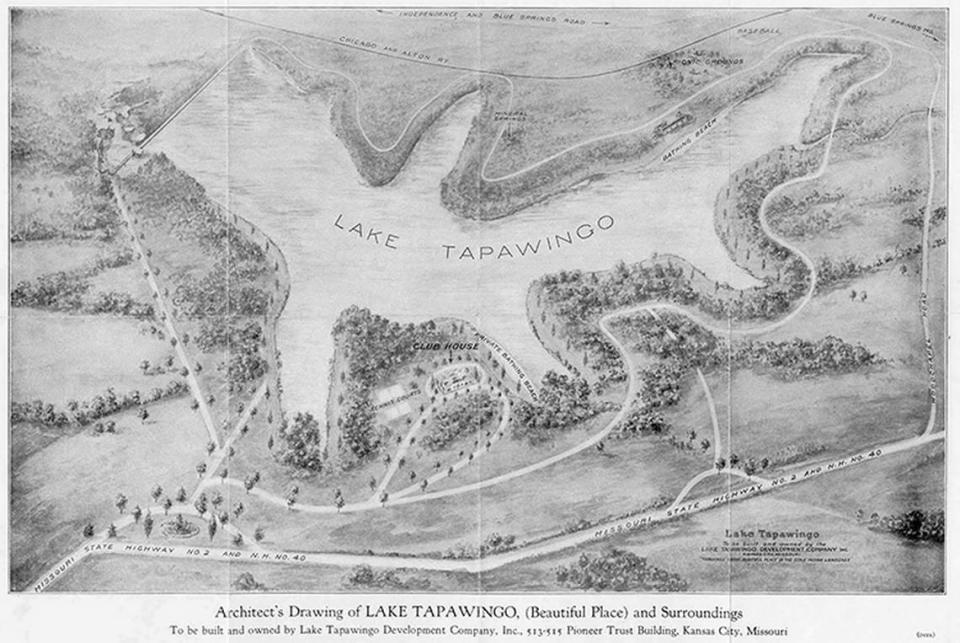How did Jacomo and other Kansas City area lakes get their names?
For this installment of “What’s Your KCQ?,” the joint project of the Kansas City Public Library and The Star, the Missouri Valley Special Collections staff tackles this reader question:
How did the various lakes like Tapawingo, Lotawana and Jacomo in Jackson County get their names?

Milton Thompson, real estate investor and owner of Highland Farms, led the development of Lake Tapawingo in 1926. Tapawingo, which translates to “beautiful place” in the Sioux language, was advertised in The Star as the city’s “exclusive sports retreat and rest haven.” Businessmen looking for summer homes quickly bought up the 500 picturesque lots surrounding the lake.
Shortly after Tapawingo’s success, Thompson and his associates embarked upon a second lake project in the Sni-A-Bar Creek valley, Lake Lotawana. According to Thompson’s wife Maud, a group of the developers’ wives chose the name during a political rally, specifying that it should be pronounced with a long O sound. Lotawana or Lotowana, meaning “sparkling water,” was the name of a legendary Mohawk princess from the Catskill Mountains.
The etymology of the 970-acre Lake Jacomo is perhaps less exciting. Named by the county court in 1958, “Jacomo” is an acronym for Jackson County, Missouri (JA-CO-MO.) According to The Star, the descriptive name was used to specify that the recreational district was financed solely by the county, without state or federal funding. Planning for Lake Jacomo began in the early 1950s due to increasing demand for more recreational areas in Jackson County.
Have a question of your own? Email kcq@kcstar.com or visit kclibrary.org/kcq.

